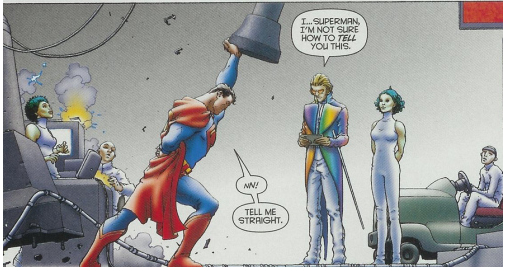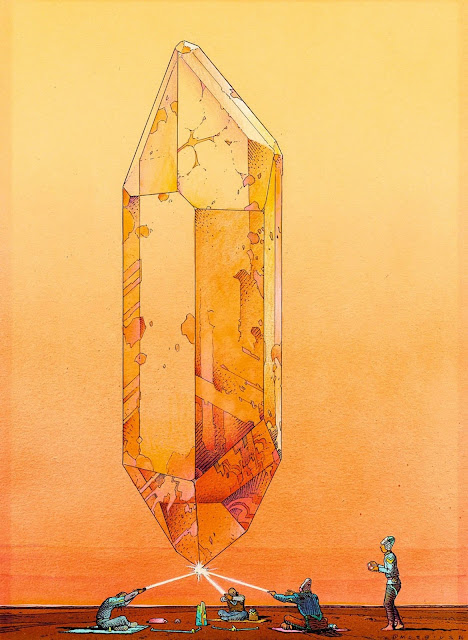JOE KUBERT 1926-2012
Sad that we have to report on the passing of another great talent of Comic Book Art;
JOE KUBERT who died on August 12 at age 85.
Kubert was born in eastern Poland in 1926 but, the area is now part of Ukraine since
WW2. The family emigrated to the USA the same year. Kubert starting drawing and writing
comics at an early age, probably 12. His first professional employment was at about 15 when he worked on a superhero character called VOLTON:
Kubert was born in eastern Poland in 1926 but, the area is now part of Ukraine since
WW2. The family emigrated to the USA the same year. Kubert starting drawing and writing
comics at an early age, probably 12. His first professional employment was at about 15 when he worked on a superhero character called VOLTON:
(Holyoke Publishing "Catman Comics" #8, March 1942).
which went on to become a regular comic book afterwards with St John's
and a full color version later withDC:
Kubert's drawn characters were always invested with emotion, which appealed to readers of all ages and ensured his wide popularity as an artist.
In 1943, he began working with a DC Comics predecessor, All-American Comics producing
a superhero story "Seven Soldiers of Victory" in the title "Leading Comics" and began his long association with the "Hawkman" character in 1945.
In the 1950's he became managing editor of St John's Publications in association with
Norman and Leonard Maurer. This group produced the first "3-D" comic books (red-green
anaglyph style) and it was here that Kubert introduced his character of a prehistoric world
"TOR":
which went on to become a regular comic book afterwards with St John's
and a full color version later withDC:
Kubert's drawn characters were always invested with emotion, which appealed to readers of all ages and ensured his wide popularity as an artist.
In a 2004 interview with Gary Groth (The Comics Journal), Kubert describes his experience with the 3D comics:
GROTH: You were drafted into the Army from ’50 to
’52. I assume that was a dead period for you?
KUBERT: No, not
so. I was working even while I was in the Army. Both for DC and Acme Comics,
and for St. John publishing. While I was taking my basic training at Fort Dix,
the Army had set me up painting the emblems on helmets and helmet liners. They
put me in a separate building and I had my own studio. I never went out on
bivouac because they had me painting helmets. I was also able to do my
cartooning. After basic I was assigned as permanent personnel in Fort Dix. A
year later I was shipped overseas to Germany.
GROTH: Fort Dix is in Georgia?
KUBERT: No, Fort
Dix is in New Jersey.
GROTH: How far from Manhattan was that? Could you
go into the city and pick up scripts?
KUBERT: It’s
about 75 miles from New York. I was married shortly after I got drafted, and my
wife would do the shuffling back and forth with the work. I had a Town and
Country Chrysler car while I was in service. A convertible. I commuted from an
apartment we had in Princeton to Fort Dix for the year that I was stationed
there. Then, all permanent personnel had to see overseas duty. Again, I was
lucky. Most of my outfit went to Korea. They shipped me to Germany. While in
Germany I did work. I was in Special Services and I was able to set up my own
studio in Sonthofen, a beautiful place in the southern part of Germany.
I was able to continue my work, mailed it into the States.
GROTH: And that would have been for DC, I presume.
KUBERT: That was
for DC. For Julie Schwartz.
GROTH: When did Julie Schwartz become your editor
at DC?
KUBERT: When I got out of the Army, my friend Norm and I produced the 3-D comic book Mighty Mouse.
I guess that’s what drove St. John Publishing out of business: the
collapse of 3-D. St. John had turned everything into 3-D and based on
the huge success of the first book, he decided to convert everything
into three-dimensional comic books. Each succeeding sale was less than
the one before. Proving that gimmicks don’t work forever. It was at the
time that I got involved with DC and doing some stuff with Harvey
Kurtzman and one or two other companies. Avon Publishing was one. Then I
went up to DC again and that’s when I got the job working with Bob
Kanigher. That must have been about ’55.
GROTH: 3-D died pretty quickly, didn’t it?
KUBERT: Yes.
GROTH: And that was just because the market was flooded with it?
KUBERT: The publishers thought the gimmick would last
forever so everybody tried to use the gimmick on everything. St. John took
every book he had and converted them to 3-D. When the market was saturated with
3-D, it was so common, readers began to ask, “Hey, what about the story? What
about the content?” The lack of content is what I think really the caused of
the death of the 3-D.
GROTH: You created Tor at this
time. And you retained your copyright. Now that suggests to me a certain amount
of savvy on your part.
KUBERT: Luck, again, Gary. Pure, unadulterated luck. And
nice guys that I dealt with. When I went to St. John with Tor, it was
copyrighted under his name. It’s true we had the same financial arrangement,
royalties and so forth, but it was still under the St. John banner. When the
book went under because of the fiasco of 3-D, St. John died, literally. His son
took over the publishing. They were putting out limited titles, none of which
dealt with the comic books. I contacted the son and said, “Look, I’d appreciate
it, since St. John is no longer publishing comic books, and since this was my
creation and of no value to you now, I’d appreciate it if you’d turn the
copyright back to me.” And he did.
GROTH: Simple as that.
KUBERT: Just like that. I still retain the letter I got
from him, returning the copyright to me.
GROTH: Can I ask you what your arrangement with St. John was like —
did they pay you per page or was there a royalty involved as well?
KUBERT: There was a budget and a royalty. As a matter of
fact, the 3-D earnings enabled me to purchase my first house. I’ll never forget
Norm and I leaving the office one day when we started to receive our first
monies. And there was a lot of money coming in. On the way home — you have to
understand. Norm lived just a little further west than where I lived — on our
way home we stopped at a Buick place and each of us bought a brand new car!
Never said anything to our wives. Just brought the cars home with us.
GROTH: How did the royalty work?
KUBERT: Based on the number of books that would sell, based
on a percentage of the profits. Norm was really the business head. When I was
doing books before the war, it was on a very informal basis.
Especially because there was not a great deal of money involved, it really
didn’t make a big difference. The only time one gets into trouble not planning
properly is when you’re a success. But when things don’t go well, nobody cares.
However, if money starts rolling in, everybody is looking for their little
piece. Norm really had an excellent business head. He would analyze the
contracts and would set things up on a much healthier business basis than we
had ever done before.
GROTH: Do you have any idea whether royalties were routinely given
out at that time? That doesn’t sound like a standard arrangement.
KUBERT: It was exceptional that a publisher would share
royalties … except in very specific instances. After the figures came out on
the book and they could make a determination of how many books sold, payments
to us would be made. The first 3-D books sold a million and a quarter copies at
25 cents a shot, which was unheard of at that time, especially at that price.
They had to go back to print again.
(more to follow).
Planetronix,
Earth, 23.08.2012
































































